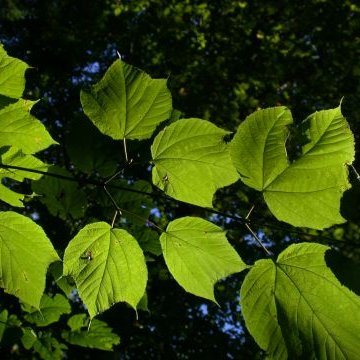

Acer pensylvanicum - (image 1 of 7)
Taxonomy
Family: Aceraceae
Habitat
Understory tree of shaded, cool northern slopes. Prefers acidic soils.
Associates
Understory associates include Viburnum alnifolium, Taxus canadensis, Acer spicatum, Oxalis spp., Otrya virginiana, Carpinus caroliniana, Amelanchier arborea
Distribution
Southeastern Canada, west to Michigan and northern Wisconsin, and south in mountains to TN and northern GA.
Morphology
Deciduous tree to to 15 feet; occasionally to 35 feet. Leaves tri-lobed, the lobes long-pointed. Twigs glabrous and greenish in color. Stalked buds with 2 scales. Distinctive green bark with vertical white stripes. Flowers yellow-green in pendulous terminal racemes.
Notes
Flowers May to June and fruits June to September
Wetland indicator: Facultative Upland
Also called moosewood. Regarded by foresters as a 'weed' tree that inhibits regeneration of more desirable woody species. The stems of this tree are quite flexible even in older specimens and the bark peels off easily in the spring. Fall color sometimes a clear yellow.
References
Dirr, Michael A.
1998. Manual of Woody Landscape Plants: Their Identification, Ornamental
Characteristics, Culture, Propagation and Uses.
5th ed. Champaign, Illiois: Stipes Publishing L.L.C.
Swink, F. and G.
Wilhelm. 1994. Plants of the Chicago Region.
Indiana Academy of Science. The Morton Arboretum. Lisle, Illinois.
USDA, NRCS. 2002.
The PLANTS Database, Version 3.5 (http://plants.usda.gov).
National Plant Data Center, Baton Rouge, LA 70874-4490 USA
|
© Michael Hough 2004 |